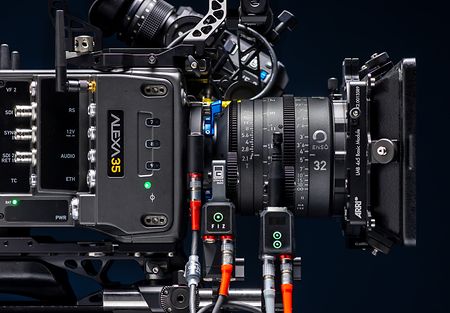“The New Years,” recently released in Spain, is a television series directed by Rodrigo Sorogoyen, David Martín de los Santos, and Sandra Romero Acevedo. The production, which received a pre-screening this year at the Venice International Film Festival, portrays the evolution of a couple over ten years. With a predominantly young team, whose life experiences resonate with the emotions of the protagonists, the project took shape over 20 weeks of filming across Madrid, Berlin, Lyon, and Valencia.
Two young Spanish cinematographers, Lali Rubio and Alana Mejía González, contributed to the project, using the ALEXA 35 to capture the series’ visual essence. Rubio oversaw the filming in Spain and captured the country’s unique spirit, while Mejía González supervised and lent her expertise to the international scenes. ARRI had the good fortune to sit down with both DPs and glean a behind-the-scenes perspective on the project.
Lali, there were several directors involved in the production. How did you all work together?
Lali Rubio: We started by developing a sort of style guide, which outlined the visual evolution that would take place in each episode. This greatly facilitated communication, as we had created a framework that was easy to share with the other two directors, Sandra Romero and David Martín de los Santos, ensuring that we were all aligned on how to approach each segment visually. I believe that having a very clear aesthetic arc from the beginning, like a guiding light, was key to achieving a coherent visual progression.

Cinematographer Lali Rubio on set
Did you have specific references that inspired the visual style of the series?
Lali Rubio: The visual approach of “The New Years” is based on realism and naturalness. For the first part of the series, we were inspired by Paul Thomas Anderson’s fresh camerawork in “Licorice Pizza,” while “Les Amandiers” by Valeria Bruni Tedeschi influenced our natural, almost imperfect look throughout. Additionally, the style of Cassavetes and “Panic at Needle Park” was referenced for capturing the complex love relationships, especially by the middle of the series. In the later part, we were guided by Richard Linklater’s “The Before” trilogy, with its more contemplative approach to the passage of time, highlighting the more mature relationships of this period. We also included references to “The Worst Person in the World” and “Scenes from a Marriage” for their emotional exploration of relationships.

The ALEXA 35’s enhanced sensitivity and dynamic range made it ideal for capturing the subtle lighting nuances in long takes and night exteriors
Why did you choose the ALEXA 35 camera?
Lali Rubio: From the beginning, I was sure I wanted to shoot with an ALEXA. As I visited the locations and worked on the planning with the different directors, I realized that I would need a very versatile camera with a wide dynamic range and strong performance in low-light conditions. Since I was working with very long takes and limited lighting options, I was particularly drawn to the possibilities offered by the new sensor in the ALEXA 35. It turned out to be a perfect choice, as it helped a lot in many night exteriors; its enhanced sensitivity feature delivered excellent sharpness and exposure.
For example, in the final episode of the series, the lighting conditions varied greatly from start to finish. It’s an episode that begins with real night scenes, followed by a long journey that requires lighting that blends with the environment, and then a very long scene inside a hotel room where there was little possibility of light manipulation. The narrative progresses until it finishes at an exterior setting at dawn. With such variation, I needed to be able to shoot at f4, an aperture that was not-too-wide and allowed me to adjust a bit for both highlights and shadows without disturbing the image too much or compromising depth of field. I decided to shoot at 1600 ISO to have some flexibility with the aperture and keep everything well-exposed, and the ALEXA 35 sensor responded magnificently to all the nuances of light and shadow with that sensitivity.





